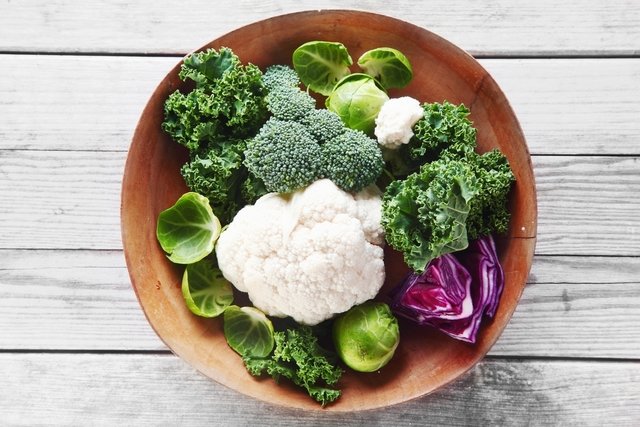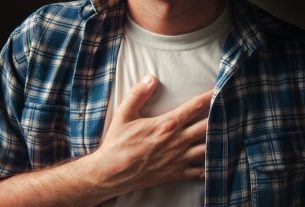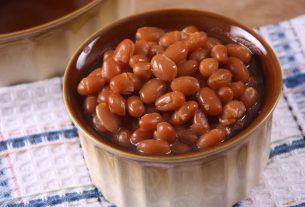The diet to combat gas must be easy to digest, to maintain the balance of the intestinal flora and the proper functioning of the intestine, thus reducing the production of gases, the feeling of discomfort, bloating and abdominal pain.
Some foods that can promote gas formation are beans, broccoli and corn, for example, as they are rich in fiber that is not digested in the gastrointestinal tract and is fermented by intestinal bacteria.
It is important to emphasize that the diet to combat gas must be individualized, because the foods that can cause flatulence vary from one person to another, and in some people it may be beans, and in others it may be dairy products, for example.
Foods that cause gas
Foods that can cause an increase in gas production are:
- Beans, peas, lentils, chickpeas, broccoli, Brussels sprouts, onions, garlic, cauliflower, cucumber, artichokes, asparagus, turnips and oats, as they are foods rich in fiber and resistant starches, such as raffinosa , which are not digested by the body and are fermented by intestinal bacteria, increasing gas production;
- Whole grains, such as brown rice, oats, quinoa, corn;
- Eggs;
- Artificial sweeteners, such as sorbitol, maltitol and xylitol;
- Some fruits rich in fructose, a type of sugar that is not well absorbed by the body, increasing the production of gases, including juices, dried fruits or fruits in syrup. Discover other foods rich in fructose.
- Sparkling drinks, such as soft drinks, sparkling wines and carbonated waters;
- Gum;
- Fried foods, such as french fries, coxinha and fried chicken;
- Processed meats and bulky meals with lots of sauce.
Dairy products, such as milk, yogurt and cheese, can also cause gas in some people, especially those who are lactose intolerant. Therefore, it is not necessary to eliminate lactose from the diet, unless it is proven that gas is related to these foods.
Furthermore, gluten can also cause intestinal gas, especially in people who have gluten intolerance or celiac disease. Some foods with gluten are wheat, barley and rye, as are all foods prepared with these ingredients. See all foods that contain gluten.
How to identify foods
As foods that produce gas can vary from one person to another, it is important to keep a food diary, in which you must record all the foods and drinks consumed throughout the day. This technique will allow you to identify which foods may have caused gas. Then, a test can be carried out to see if a certain food is responsible for the discomfort, eliminating it from the diet for 3 days and checking if the symptoms improve. See how a food diary is made.
It is recommended to do this test under the guidance of a nutritionist. This is because depending on the results of the food diary, the elimination of some foods from the diet may be recommended, but in order to avoid nutrient deficiencies.
Foods that reduce gas
In addition to removing foods that stimulate gas formation, also consume foods that improve digestion and the health of the intestinal flora, such as:
- Tomato and chicory;
- Kefir or yogurt with bifidobacteria or Lactobacilluswhich are beneficial bacteria for the intestine and act as probiotics (recommended only for people who are not lactose intolerant);
- Consume lemon balm, ginger, anise or carqueja teas, which have digestive and antispasmodic properties, improving digestion and facilitating the expulsion of gases.
Furthermore, other tips that help reduce gas production are avoiding drinking liquids during meals, eating slowly, chewing well and doing physical activity regularly, as these are tips that speed up digestion and improve intestinal transit, reducing gas production. by bacteria. Discover other strategies to eliminate intestinal gas.
Example of a gas menu
The following table indicates a diet option to prevent the formation of intestinal gas. However, if some of the foods listed on the menu cause gas, it is important to avoid them:
The types and amounts of recommended foods vary according to each person’s tolerance, age, weight, physical activity and current health status. Therefore, it is recommended to consult a nutritionist so that a complete assessment can be carried out and a nutritional plan tailored to individual needs can be created.
Bibliography
- VICTORIA STATE GOVERNAMENT. Better health channel: flatulence. Disponível em: <https://www.betterhealth.vic.gov.au/health/conditionsandtreatments/flatulence#foods-to-limit-to-reduce-flatulence>. Acesso em 10 out 2022
- NATIONAL INSTITUTES OF DIABETES AND DIGESTIVE AND KIDNEY DISEASES. Eating, diet, and nutrition for gas in the digestive tract. Disponível em: <https://www.niddk.nih.gov/health-information/digestive-diseases/gas-digestive-tract/eating-diet-nutrition>. Acesso em 10 out 2022
- COZMA-PETRUT Anamaria; LOGHIN Felicia et al. Diet in irritable bowel syndrome: What to recommend, not what to forbid to patients!. World Journal of Gastroenterology. 23. 21; 3771–3783, 2017
- MAHAN, L. Kathleen et al. Krause: Food, Nutrition and Diet Therapy. 13.ed. São Paulo: Elsevier Editora, 2013. 610-612.
- MENDES, André G.. Pharmaceutical Intervention in Digestive Pathologies with Therapeutic Indication of Non-Prescription Medications. Master’s Thesis, 2013. Universidade Lusófona de Humanidades e Tecnologias.

Sign up for our newsletter and stay up to date with exclusive news
that can transform your routine!
Warning: Undefined array key "title" in /home/storelat/public_html/wp-content/plugins/link-whisper-premium/templates/frontend/related-posts.php on line 12
Warning: Undefined array key "title_tag" in /home/storelat/public_html/wp-content/plugins/link-whisper-premium/templates/frontend/related-posts.php on line 13




